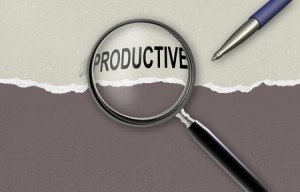 You have high demands on your time with things constantly competing for your attention. With so much demanding our time, it’s obvious that procrastinating doesn’t help the situation at all. When you think about or hear the term procrastination, you typically think of destructive procrastination. It really does cause upheaval. Research shows that people spend most of their time and effort working on activities that have nothing to do with the success of their projects. It’s the biggest reason that people fail to reach their goals. In one survey, 40% of those surveyed said that procrastination cost them money. If you’ve heard me share information about procrastination before or have worked with me, you know that it can cost you a lot more.
You have high demands on your time with things constantly competing for your attention. With so much demanding our time, it’s obvious that procrastinating doesn’t help the situation at all. When you think about or hear the term procrastination, you typically think of destructive procrastination. It really does cause upheaval. Research shows that people spend most of their time and effort working on activities that have nothing to do with the success of their projects. It’s the biggest reason that people fail to reach their goals. In one survey, 40% of those surveyed said that procrastination cost them money. If you’ve heard me share information about procrastination before or have worked with me, you know that it can cost you a lot more.
That’s the not so pretty face of procrastination, but did you know that you can actually use procrastination to boost your productivity? It’s true! There are ways to use procrastination to your advantage to feed your flow of productivity. Understand that I’m not saying that one should procrastinate in a destructive manner. Doing so will disable your level of productivity and keep you from getting things done and ultimately from reaching your goals. But there are ways to use it that will help get you to Point B.
When you look at your to-do list chances are that you see things there that don’t need to be done right away and some might not ever need to be done although you might consider everything there to be important. If you take a step back, relax, and look closer you can gain a totally different perspective. Take a look and note what you see. You might see your responsibilities as the important things, but what about the personal items on your to-do list? They can be important too. Then look at the things that you’ve been putting off. As you do, you might see things that aren’t related to your values or intentions. There might be a better way for you to reach your intention. In this case, it’s time to stop and think about other ways to reach your intention. This would be more productive than having something on your list that you are destructively procrastinating on.
Here, in this instance, you’re making a conscious choice to put something off to find a more suitable goal. Doing so contributes to your productivity. As you continue to look at the things you’ve been putting off, you might realize that there’s something that you want clarity on, or maybe additional information before you take on the task.
Take the steps necessary to get clear about the task. Consult the appropriate resources for the information that you need. If it’s clarity that’s missing for you, do what you have to do in order to get a clear picture. Try journaling, mind mapping or even creating a vision board to gain some depth and clarity. While you’re waiting for clarity, focus on other goals and activities, while staying present to your intention. Doing so might still lead you to just the right solution; meeting the right person, coming across the right resource, being in the right place at the right time to hear something that you need to hear, seeing an idea, being at an event that stimulates you to move forward. This is not an effortless process as it can be hard to sustain the patience and to trust yourself. Been there, done that!
Looking at your list and realize that you aren’t ready for something that you’ve been putting off. Maybe the opportunity is just not right. Or perhaps you’re struggling with things other than strategy, logistics, an action plan or timeline. You might just need to wait, which is truly opposite of what you’ve been taught to do, so you may not feel comfortable doing so. There’s the illusion that you’re doing something wrong if you don’t do it yesterday; being “on” 24/7/365. It’s possible that you may lose an opportunity. But you also have to realize that if you don’t allow time for things to take root, you can end up being frustrated and wasting your time and energy and maybe even money. When you wait, your ideas can gel or things can be revealed or become more apparent to you. There is internal activity that you don’t realize takes place when you go this route. That activity is important to the task at hand.
Finally, you can do nothing. Yes, I said do nothing. Your tendency is to push yourself and to push hard. You don’t slow down, which contributes to no down time. This gives you an opportunity to be clear about what you want to accomplish and the strategy for doing so. To keep that clarity, you have to have down time. It could be a few minutes at a time, a few hours or you might need a weekend. Whatever the length of time, take it, and then go back to the task at hand. Allow for the possibility of harmony. This is definitely something that you are not used to doing, but something that will support and aid in your productivity.
Remember what you are doing and why and this will keep you on track. The difference between destructive and productive procrastination is the conscious choice and the intention behind it.
